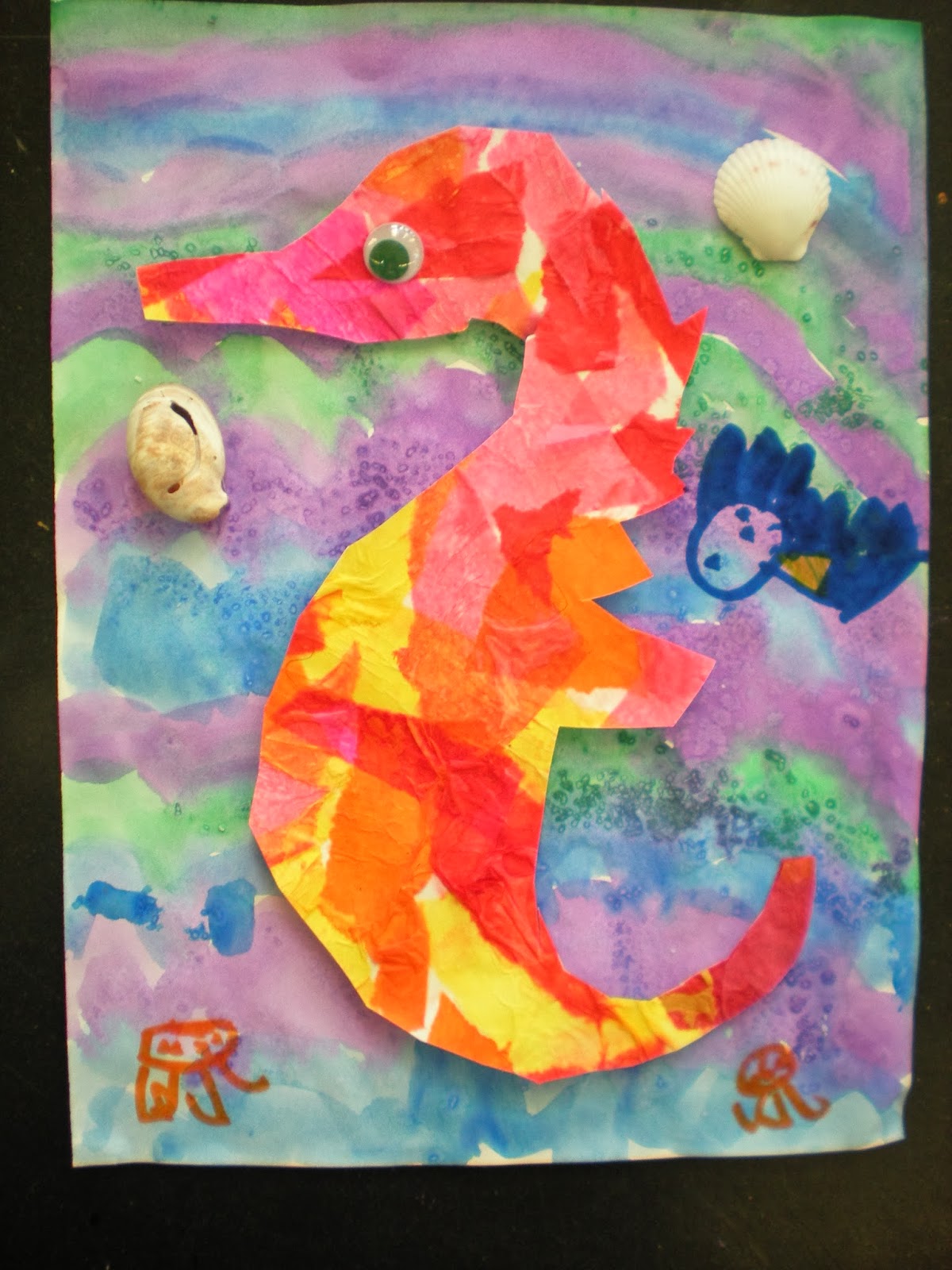This lesson was inspired by the artist and illustrator Eric Carle and his book "Mr. Seahorse" which teaches about the male seahorses role. I chose not to read this book to my classes, but instead talked about the way Carle uses collage to create his seahorses.
In the first class, we reviewed warm, cool, primary and secondary colors. Students were asked to chose one grouping of colors for their seahorse. A quick demonstration on gluing tissue paper down using a glue and water mixture followed.
In the second class, students traced a basic seahorse shape I had made for them. After they traced, I taught them how to draw a fin and some extra spines. Googly eyes were added. Students cut out their seahorses. Using watercolors, students created a background for their seahorses. I gave them the option of using similar colors and having their seahorse blend in, or using opposite colors in order to make their seahorse stand out. I added salt while their watercolors were still wet to create an interesting effect.
In the third class students put the background and seahorse together, added shells and other creatures in the backgrounds. They were beautiful!
In the first class, we reviewed warm, cool, primary and secondary colors. Students were asked to chose one grouping of colors for their seahorse. A quick demonstration on gluing tissue paper down using a glue and water mixture followed.
In the second class, students traced a basic seahorse shape I had made for them. After they traced, I taught them how to draw a fin and some extra spines. Googly eyes were added. Students cut out their seahorses. Using watercolors, students created a background for their seahorses. I gave them the option of using similar colors and having their seahorse blend in, or using opposite colors in order to make their seahorse stand out. I added salt while their watercolors were still wet to create an interesting effect.
In the third class students put the background and seahorse together, added shells and other creatures in the backgrounds. They were beautiful!







Comments
Post a Comment